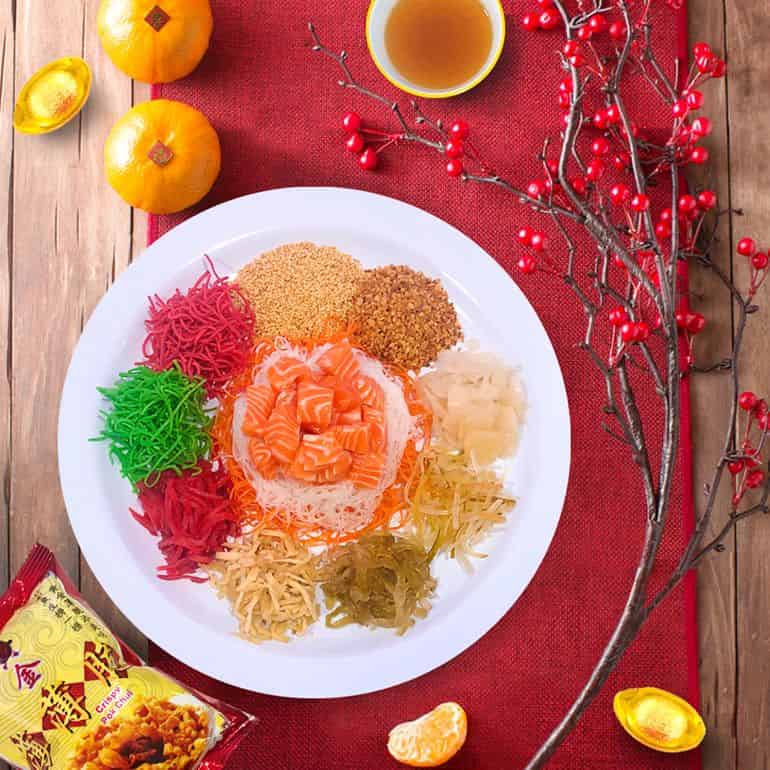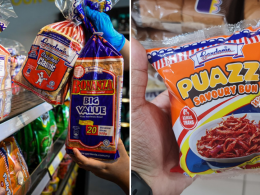“Heng ah! Ong ah! Huat ah!” You might have heard these phrases now and then during Chinese New Year, especially during the ‘Lou Sang’ ceremony. The scene of people tossing a plate of mixed vegetables known as Yee Sang up in the air may seem peculiar, but what exactly are they throwing and why?
You may see this unique dish in Chinese banquets, especially during Chinese New Year in Malaysia and Singapore, and it actually carries a deep meaning that is significant in the course of the Lunar New Year. Here’s why ‘Yee Sang‘ became a staple dish during the festive Chinese New Year period in this region, and what it represents.
The origins of ‘Yee Sang’, and its ties with YB Anthony Loke

‘Yee Sang’ is a type of mix salad consisting of the traditional combination of raw fish, carrots, daikon, cucumber, pickled ginger, pomelo, peanuts, sesame seeds, pillow crackers, five spice powder, pepper, oil and plum sauce. Each of the ingredients is meant to represent a traditional Chinese New Year wish that is used to bless those who toss the salad with an auspicious new year.
For example, the addition of salmon fish slices is meant to symbolise the Chinese wish, ‘Nián Nián Yǒu Yú’. which means ‘may you be blessed with abundance and excess every year’. Over the years, many modifications have been made by restaurants to this dish to make it more creative, but its objective remains intact.
Many do not know this but the current rendition of this significant dish may have originated in Malaysia! ‘Yee Sang’ was inspired by the Chinese tradition of including ‘fish’ in their dishes, as referred to the Chinese phrase ‘Nián Nián Yǒu Yú’ (May there be more every year).

According to The Star, this CNY favourite was likely created by a Cantonese immigrant from China named Loke Ching Fatt, who also happened to be the grandfather of Malaysia’s incumbent Minister of Transport, Anthony Loke! He came up with this dish in the 1940s when he was operating a humble catering business called Loke Ching Kee in the town of Seremban. At that time, Malaya was just recovering from World War II, and ingredients were scarce, so the people could not celebrate the upcoming Chinese New Year lavishly.
Therefore, Loke thought of a way to pivot his business by creating the ‘Sup Kum Yee Sang’ (Ten Senses Yee Sang) for customers to enjoy on the seventh day of Chinese New Year, which is also believed to be the day humans were created. It was named that way due to the dish’s complex mix of tastes, aromas and colours.

Not only did he include the Cantonese tradition of eating raw fish on that day, but Loke also incorporated some food culture of the Teochew and Hokkien communities to ensure inclusivity. And his plan worked! Many of the residents there were intrigued by this creative dish, and it eventually attracted customers from all around the country. That’s how ‘Yee Sang’ remains to this day after it has been popularized by Loke and his descendants.
With that said, there are some retellings of the dish’s origin which claims to have originated from Singapore.
The meanings of each ingredient
As mentioned, each ingredient in Yee Sang has its own unique symbolism to bring about a year of auspiciousness and prosperity. A traditional Yee Sang generally has all the ingredients listed here such as:
- Raw fish – Abundance for year after year
- Cucumber – Because the Chinese word for cucumber ‘Ja Kua’ sounds similar to the word ‘return’ in Chinese, this vegetable represents many happy returns in every venture
- Carrot – Its orange texture resembles gold, so carrots signify the amount of fortune in a household
- Green and white radish – Represents forever youth
- Pickled ginger – Due to its healing and anti-bacterial purposes, this symbolises good health
- Pepper and five-spice powder – May the five blessings descend upon you
- Sesame oil – Good fortune and good luck
- Plum sauce – Sweet and loving relationships
- Pillow crackers – May you find scattered gold in your life
How do you eat it?

To eat this dish, the people sitting at the table would first gather around with their chopsticks and prepare themselves for some energetic tossing. Like its name ‘Prosperity Toss’, ‘Yee Sang’ is meant to be tossed up in the air repeatedly until the ingredients are fully mixed while the diners shout auspicious words. This ceremony will most likely end up in a mess because it is believed that the higher the diners toss, the more fortune they may receive in the new year.
However, it’s all about the fun, so remember to lift up the ingredients as high as you can. Shout out these auspicious words for more enjoyment too!
The ‘Yee Sang’ ceremony is a proud tradition in Malaysian Chinese culture, for the dish itself was something we called our own. So don’t miss out on your toss, and enjoy this traditional dish with your family this Chinese New Year.
Tap here to give us a ‘Like’ on Facebook and stay up-to-date on the latest news!









